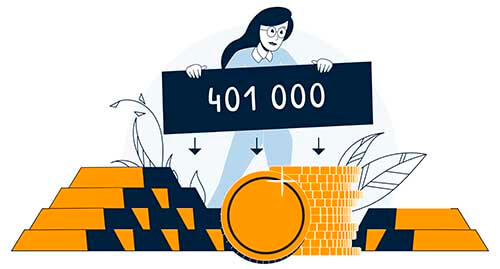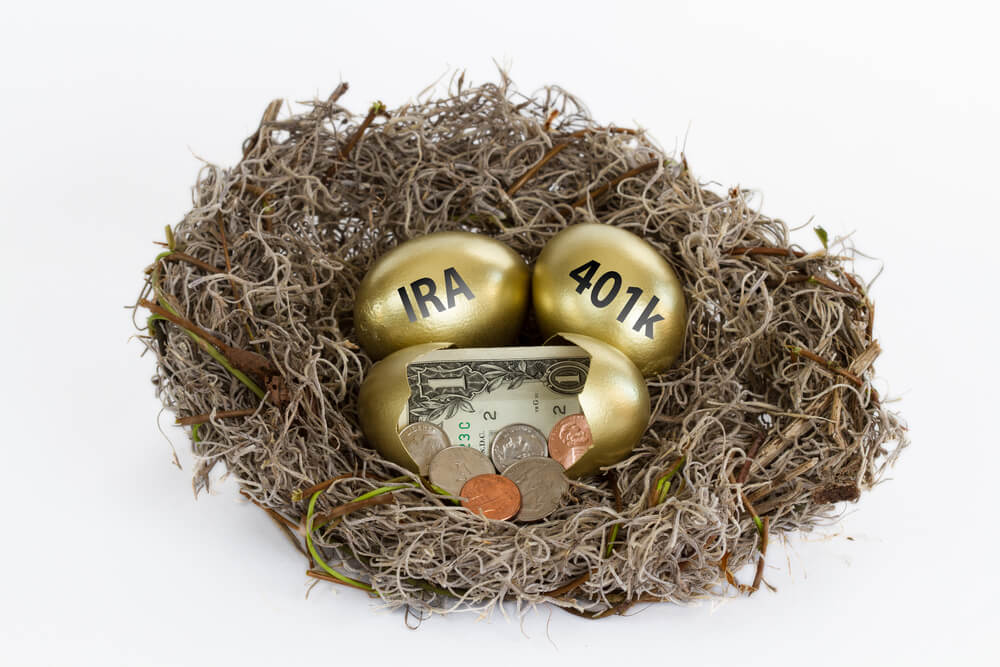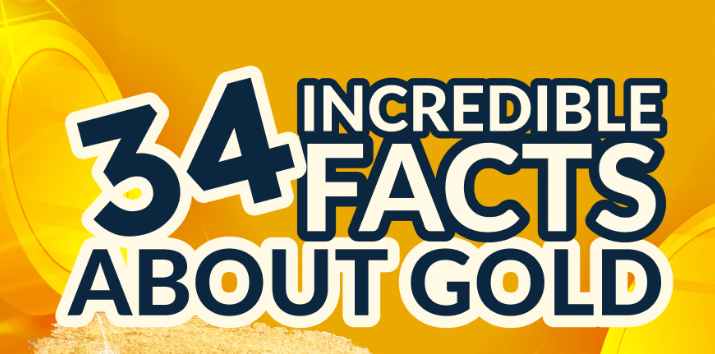
How is Gold Taxed in an IRA?
First, gold cannot be a part of a traditional IRA (individual retirement account) setup or the IRA that you and your employer contribute to together. To include the precious metal in an IRA arrangement, you may have to look at a “self-directed IRA” or SDIRA.
An SDIRA can hold diverse alternative investments usually forbidden from inclusion in traditional IRAs. Those investments include real estate, commodities, precious metals (like gold and silver), tax lien certificates, limited partnerships, etc. Unlike regular IRAs, you are the lone entity contributing to the fund, or no employer is putting its due share in.

However, similar to a conventional IRA, SDIRAs fall under the purview of the IRS. That means the IRA must have a proper structure, and an IRS-approved custodian should safeguard the asset.
There are different kinds of self-directed IRAs, and a precious metals IRA – for instance, a gold IRA – is one of them. However, the important question is how you get taxed or pay taxes for buying gold through an IRA.
In this article, we’ll find that out and more focusing on:
● Individual physical gold ownership taxation and keeping the IRS in the know.
● Gold and its “cost basis”.
● Tax rules that apply to a gold IRA, and more.
Table of Contents
Kindly note, we will not be focusing on gold IRA or giving you a significant overview of it here, for we’ve handled the topic extensively already at different instances in our coverage of the subject. Look around our site or check out our “Top Gold IRA Investment Companies 2022” guide for more information.
Physical Gold and Taxation
The IRS considers physical ownership or holdings in gold or other precious metal – such as silver, platinum, titanium, and palladium – capital assets and classifies them as “collectibles”. Therefore, holdings in gold or other precious metals (irrespective of their form, shape, or size) are subjected to capital gains tax.
The STCG (short-term capital gain) tax applies when you buy gold and sell it within a year of acquisition. The tax treatment is pretty much identical to how ordinary incomes get deducted for your due share to the IRS.
There’s also or LTCG (long-term capital gain) tax. But because gold falls under the “collectible” classification, LTCG doesn’t apply here. Instead, the capital gain is considered ordinary income even if you held the gold for more than a year before its sale.
Gains on collectibles, such as gold, art, etc., attract a 28% maximum tax rate. That also means individuals in the high tax bracket (39.6%, 35%, and 33%) pay no more than 28% on the gains derived from selling their precious metal coins, bullion coins, or other forms of physical gold investments. Moreover, a net investment income (NII) tax of 3.8% could apply.
The 28% rate is almost double the 15% highest tax rate levied on long-term capital gains (LTCG) derived from other assets (stocks, ETFs, mutual funds, etc.). A 20% maximum rate applies to taxpayers earning higher income with other assets. Taxes shall not apply if the total taxable income is below $80,000.
Why is the tax rate on the trade of collectibles so high? That’s because the government doesn’t fancy purchasing and selling collectibles much. To them, collectibles do not drive the economy like investing in tools and knowledge. In other words, the state likes it when money is invested in anything that helps boost GDP.
The 28% tax rate is massive and defeats the purpose behind people investing in gold in the first place. This is where gold investing through an IRA comes in. (Taxes pertaining to gold IRAs are discussed in a bit more detail later in the article).
Informing the IRS About the Precious Metal Sale
Tax liabilities on your precious metals’ sales aren’t due immediately after the deal is done. On your income tax return, you must report the physical gold sale on Schedule D (Form 1040).
Items that must be filed include:
- 90% silver half or quarter American dollars or dimes with a $1,000 face value.
- An ounce or more of Gold Krugerrand, Gold Maple Leaf, Gold Mexican Onza, and other equivalent coins.
- One thousand troy ounces or 1-kilogram gold bars and silver bars.
American Eagle coins do not need a Form 1099-B filing. The Gold Eagle coin and other similar assets’ tax bills on their sales would be pending right when your regular tax bill is expected.
Read more: Gold IRA Depositories
How Gold Came into the IRA Fold

A self-directed IRA that allows investing in gold or other precious metals was unavailable as gold is a “collectible”.
Traditional IRAs entered the scene in 1974 when investing in gold through the arrangement was not allowed. In 1986, the IRS permitted investing in U.S. gold and silver coins alone. More than a decade later, in 1998, the IRS started acknowledging bullion coins with a purity of 99.5% or more for an IRA.
Despite the relaxed restrictions, a gold IRA doesn’t permit all forms of physical gold under its ambit. Because the gold purity and quality requirements are set very high, several gold coins from across the globe do not qualify for investing through an IRA — the British Sovereign gold coins and the Krugerrand are notable exclusions.
The Double Eagle gold coin also doesn’t make the cut since it’s only 90% gold, which is way off the minimum purity requirement for an IRA.
Gold jewelry is not part of the picture because it’s either not pure enough for an IRA or because it isn’t produced by a national government mint or refinery approved by COMEX (Commodity Exchange Inc.) or NYMEX (New York Mercantile Exchange).
How is Gold Taxed in an IRA?
A gold IRA is a self-directed IRA that isn’t much different from a traditional IRA. The major differences between the two are that a gold IRA allows investing in gold coins or gold bullion coins, and no employer contributes to the fund. Because a gold IRA and a regular IRA function quite similarly, the applied taxes are pretty identical.
Before getting to the tax part, let’s briefly discuss the various gold IRA costs.
The Costs of a Gold IRA
There are different costs attached to a gold IRA, silver IRA, or other precious metals IRAs. And those amount to significantly more expenses than a regular IRA investment. For example, you must pay the depository a fee for safeguarding your gold investments as you cannot store the physical gold yourself. There’s no such fee with a traditional IRA.
Then there are multiple other fees attached to working with an IRA custodian — for instance, the 10% premature withdrawal (distribution before turning 59.5 years old) penalty fee.
Needless to say, based on the brokerage firms or companies you choose to work with, your costs of purchasing and selling gold in your IRA would vary. Irrespective of who you choose to work with, the total costs would usually not be greater than the taxes you may pay on your gold investment.
Gold IRA and Taxation
You may buy gold for your IRA with pre-tax dollars and get taxed at the time of distribution. Then, there’s the Roth route, where you fund your gold IRA with post-tax dollars. The account growth and distribution are tax-free. The option to delay tax payment and reduce capital gains for the particular year is a crucial aspect attracting individuals who’d like to invest in gold.
Not to mention, you may switch between a Roth IRA arrangement and a non-Roth IRA variant anytime after having opened the account without incurring any charges or penalties.
The actual amount you pay in taxes on your IRA gold investment would vary with the amount of gold you own and the income bracket you fall in. The sum withdrawn would be added to your total income for the period, and taxes would be applied accordingly.
If you incur losses on your gold investments, or your gold buying price was higher than the price you sold it for, you cannot make deductions for those losses during the tax filing.
It’s “Self-Directed”
Although you have an IRA trustee managing your gold IRA investments, they would offer pretty much no guidance on how much or the specific form of gold you must invest in. And the lack of assistance applies to helping you comprehend your gold IRA investments’ tax implications as well.
Therefore, know what you’re getting into when investing in gold IRAs. If you don’t know what you’re doing, enlist someone to help you understand your moves and the consequences of those actions.
The “Cost Basis” of Gold
The total tax you owe upon selling your gold bars and coins, gold ETFs, or any other form of actual gold would depend on gold’s original value or cost basis. In other words, to ascertain the taxes you need to pay after selling a collectible like gold, you must know its cost basis.
The basic formula to ascertain gold or any collectible’s cost basis is:
- Item cost + brokerage and auction fees (the item cost shall include restoration and maintenance costs)
(The exact cost basis computation applies to other precious metals such as silver, platinum, and palladium as well.)
There could be two distinct scenarios when calculating the cost basis of physical gold.
If the metal was offered to you as a present or reward, the cost basis would be equivalent to its market value on the date the gift was purchased. If the value is lower on the day of gifting than its purchase price, the lower value or the date of gift receipt would be the cost basis.
If the gold was bequeathed, the cost basis would be the metal’s fair market value on the death date of the person the gold was inherited from. If you didn’t appraise the gold at the time of inheritance, gold prices on that particular date would then be considered.
The drawback with this “price referencing” or “comparables (comps)” method is the gold article’s condition isn’t accounted for. In other words, any money you may have put into restoring the piece will not be considered in the “comps” technique.
Read more: Home Storage IRA
Conclusion
Tax, by itself, is a complicated topic. And when you throw gold IRA into the mix and the taxes that accompany the arrangement, things only get complicated further.
The above information hopefully provides you a comprehensive overview of how gold gets taxed within and outside an IRA. However, the information is not meant to help you conclude or deduce how much you owe the IRS or do your taxes yourself.
Always talk to an accountant or attorney for learned and professional assistance with your taxes. Not to mention, this article will equip you with the knowledge needed to comprehend how your CPA or CRTP goes about their business.
Your after-tax returns on your gold investment through an IRA would be more attractive compared to other forms of physical gold investments. It’s, therefore, worth the time and effort to sort the tax aspect of your gold IRA.
Not rubbing the IRS on the wrong side and not paying too much in taxes is a win-win situation you should aim for, after all.
FAQs
Should a gold IRA only comprise physical gold investments?
A gold IRA is generally synonymous with gold coins and bullion. Most people do not realize that paper investments relating to gold are also permissible. Gold mining ETFs, stocks of gold mining firms, gold mutual funds, gold commodity futures, etc., qualify for inclusion in a gold IRA.
Physical gold is invariably identified with a gold IRA because the account affords provisions and benefits that gold investors who own real gold outside of an IRA cannot reap. Tax provisions, asset security, etc., are some of those advantages.
Kindly note, paper-based investments can be invested outside of an IRA as well. For instance, a gold ETF lets you purchase and sell stocks and hold those shares in a standard 401(K).
How much should you invest in a gold IRA?
A gold IRA has its tax benefits and other advantages, which will not be feasible when owning gold or holding money in physical gold coins outside of a traditional gold IRA. However, that doesn’t imply you go overboard with your IRA gold investment or allocate a significant chunk of your wealth to it. Your gold investment or exposure should not be more than 10% of your total investment/retirement savings portfolio value — whether it’s through IRA or something else.


